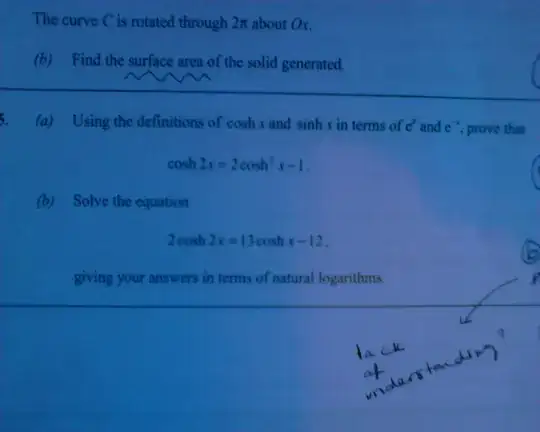I've been asked to solve:
$2\cosh2x = 13\cosh x - 12$
I showed earlier in the question that $\cosh2x = 2\cosh^2x -1$
So I can say that:
$2(2\cosh^2x -1) = 13\cosh x - 12$
$\therefore 4\cosh^2x -13\cosh x + 10 = 0$
$\therefore \cosh x = \frac{5}{4}$ or $\cosh x = 2$
From $\cosh x = \frac{5}{4}$ I can say:
$e^x + e^{-x} = \frac{5}{2}$
$\therefore e^{2x} - \frac{5}{2}e^x + 1 = 0$
Solving this quadratic gives:
$e^x = 2$ and $e^x = \frac{1}{2}$
$\therefore x = \ln2$ and $x = \ln \frac{1}{2}$
If we do the same thing for $\cosh x=2$
$e^x + e^{-x} = 4$
$\therefore e^{2x} - 4e^x + 1 = 0$
Solving this quadratic gives:
$e^x = 2 \pm \sqrt{3}$
$\therefore x = \ln(2 + \sqrt{3})$ and $x = \ln(2 - \sqrt{3})$
When I put these four values on $x$ (separately) into my original equation they all work. However, the mark scheme to this question accepts only:
$x= \ln 2$ and $x = \ln(2 + \sqrt{3})$
How come they're not taking the negative square root when solving the quadratic in terms of $e^x$ into account?
Thank you :)
EDIT:
Here is a photo of the original question:
